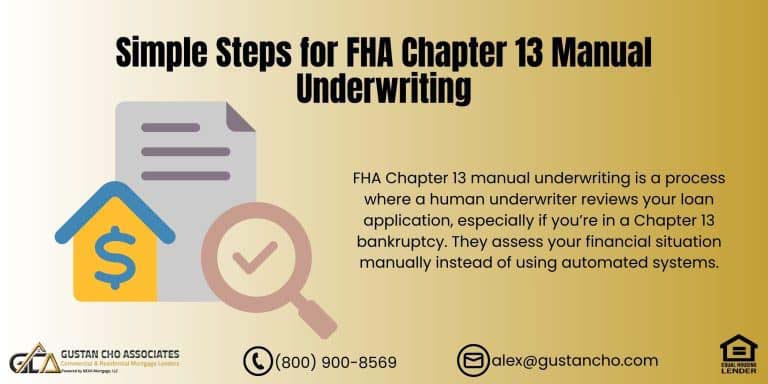Appraisal Review in Mortgage Underwriting Process: Your Guide to Success in 2024
Buying a home is one of the most exciting moments in life, but it comes with some steps that might seem complicated at first. One of those key steps is the home appraisal and its review during the mortgage underwriting process. Understanding how it works is important to avoid surprises and ensure you get the right home loan deal.
In this guide, we’ll walk you through everything you need to know about the appraisal review in the mortgage underwriting process in 2024 and how this step impacts your home purchase or refinance.
What Is a Home Appraisal in the Mortgage Process?
A home appraisal is a professional evaluation of your property to determine its market value. The appraisal’s value helps the lender ensure they’re not lending more than the house is worth. Essentially, the lender needs to know that the home can cover the loan amount if the borrower defaults. This protects the lender’s investment and ensures that you, as the borrower, aren’t overpaying for a home.
Here’s how it works:
- An appraiser—a neutral, licensed third-party professional—inspects the home.
- They evaluate the home’s condition, size, location, and recent comparable sales (known as “comps“).
- A report is generated detailing the fair market value of the property.
This is a required step in most mortgage transactions, whether you’re buying or refinancing.
Ordering The Home Appraisal
An appraisal cannot be ordered by the client but by the mortgage lender through an Appraisal Management Company. Loan officers are not allowed to talk to the appraiser. It is illegal to try to influence an appraiser. All contacts from the lenders need to go through the Appraisal Management Company. Once all mortgage conditions have been met and before the lender issues a clear to close, an appraisal review is conducted by the mortgage lender’s appraisal review department.
Concerned About Your Home Appraisal? Let’s Review It Together During the Underwriting Process!
Contact us today to understand how your appraisal affects your mortgage and how we can help with the review.What Happens During the Appraisal Review in Mortgage Underwriting?
After the appraisal is completed, the underwriter steps in. The underwriter’s job is to ensure the appraisal matches the loan application and the property’s value justifies the amount being lent. This is called the appraisal review in the mortgage underwriting process.
An underwriter might:
- Review the appraiser’s methods to make sure they’re accurate.
- Verify the comps used are similar to your property.
- Look for red flags that might require a second look or further clarification.
Lenders require this review to avoid any issues with the loan’s risk, so they may question or investigate the appraisal before approving your mortgage.
When Does the Appraisal Review Happen?
The appraisal is ordered shortly after your loan application is submitted and typically takes about a week to complete. Once the appraisal report is in, the appraisal review in the mortgage underwriting process begins. This step happens before your loan gets its final approval and is “clear to close.”
Why Is the Appraisal Review Important for Homebuyers and Refinancers?
The appraisal review in the mortgage underwriting process is crucial for ensuring that you’re not paying more than the home’s true value and that the lender is not taking on too much risk. If the appraisal comes in lower than expected, it could affect your ability to borrow enough to cover the purchase price.
For refinancers, this process determines how much equity you have in the home, which directly affects how much cash you can take out (if you’re doing a cash-out refinance) or whether you qualify for a loan based on your home’s current value.
Common Reasons for Appraisal Reviews in 2024
Sometimes, an underwriter might not automatically accept the appraiser’s valuation. Here are some common reasons for appraisal reviews:
- Outdated Comparables: If the appraiser used home sales that are too old or from a different neighborhood, the underwriter might request new comps.
- Unusual Market Conditions: If the housing market is volatile, the appraiser’s estimate might not reflect the property’s true value.
- Questionable Home Condition: If the home has obvious issues that could affect its value (like roof damage or outdated electrical systems), the underwriter may ask for further documentation.
- Value Doesn’t Match the Purchase Price: If the appraisal is significantly higher or lower than the purchase price, the underwriter will dig deeper to understand why.
How Does a Low Appraisal Impact Your Loan?
When the appraisal comes in lower than the purchase price, it can cause problems. Lenders base your loan amount on the lower appraised value or the purchase price. For example, if you’re buying a home for $300,000 but the appraisal says it’s only worth $280,000, the lender will base your loan on the $280,000 figure. This means you’ll either need to negotiate with the seller to lower the price or determine the difference in cash.
If you’re refinancing and the appraisal is low, it could limit how much you can borrow or disqualify you from getting the refinance.
Steps to Take if Your Appraisal Comes in Low
If your appraisal comes in lower than expected, don’t panic! There are steps you can take to handle it:
- Appraisal Rebuttal: When you provide additional information (like recent sales or improvements made to the home) to the lender to get the appraisal reconsidered. However, be aware that rebuttals are rarely successful.
- Renegotiate the Purchase Price: In many cases, sellers are willing to lower the price if the appraisal comes in low. It’s in both the buyer’s and seller’s interest to ensure the sale goes through.
- Increase Your Down Payment: You can always make up the difference in cash between the appraised value and the purchase price. This increases your down payment but keeps the deal alive.
- Walk Away: If your purchase contract includes an appraisal contingency, you can leave the deal if the appraisal comes in low.
What Is a Field Review?
In cases where the underwriter doesn’t trust the original appraisal, they may order a field review. A field review is a second appraisal, often a “drive-by,” where another appraiser is sent to verify the original report. The field review ensures the first appraisal wasn’t off and provides a second opinion on the value.
If the field review results in a different value, the underwriter might use the lower two appraisals or adjust the loan amount to reflect the more conservative value. In 2024, as housing markets fluctuate, field reviews may become more common to avoid risky lending.
How to Avoid Appraisal Issues in 2024
There are ways to prepare for the appraisal process and avoid issues with the appraisal review in mortgage underwriting:
- Prepare Your Home: Make sure your home is in top condition. Minor repairs like fixing leaky faucets, patching up walls, or clearing clutter can make a big difference in the appraiser’s overall impression.
- Do Your Homework: Research recent home sales in your area before listing your home or applying for a refinance. This gives you an idea of what your home might appraise for.
- Provide Documentation: If you’ve made significant upgrades, be ready to show the appraiser receipts and documentation. This could include anything from new appliances to a remodeled bathroom.
- Work With a Skilled Realtor: Your agent can help ensure the property is listed reasonably and that you’re using the right comps to justify your purchase or sale price.
Need Help with Your Home Appraisal Review? We’re Here to Guide You Through the Underwriting Process!
Reach out now to discuss your appraisal review and ensure everything is in order for a smooth mortgage process.2024 Updates to the Appraisal Process
As we move into 2024, the appraisal process is seeing some updates. These changes reflect the current real estate market conditions and the increasing use of technology:
- Desktop Appraisals: In response to the pandemic and evolving technology, desktop appraisals—where the appraiser values the home remotely using online data—are becoming more common. While not the standard, more lenders accept these for certain loans, especially refinances.
- Automated Valuation Models (AVMs): AVMs use computer algorithms and public data to estimate a property’s value. These tools sometimes supplement traditional appraisals and might become more prevalent in 2024.
- FHA and VA Appraisal Guidelines: If you’re applying for an FHA or VA loan, be aware that their appraisal guidelines are stricter than those of conventional loans. For example, the home must meet certain safety standards, which can cause issues if the property needs repairs. Always double-check FHA and VA guidelines before entering the appraisal phase.
Final Steps in the Appraisal Review Process
After the appraisal review is finalized and all requirements are fulfilled, the lender will provide a clear to close. This means you’re ready to move forward with the loan closing. Congratulations! You’re almost at the finish line.
At this stage, your underwriter will confirm all details are correct, the home’s value is validated, and the loan is ready for disbursement. Keep communication open with your loan officer, and make sure all final documents are in order.
Key Takeaways for Homebuyers and Refinancers
The appraisal review in the mortgage underwriting process is critical, whether purchasing a new home or refinancing your current one. Here’s what you need to remember:
- The appraisal review ensures you’re paying a fair price and that the lender isn’t taking excessive risk.
- If the appraisal comes in low, you can take steps to remedy the situation.
- Stay informed and prepared—working with experienced professionals can make all the difference.
Buying or refinancing a home is a big decision, and knowing what to expect in the appraisal and underwriting process can help you make it confidently.
Are you ready to make your next move? Call or text us at 800-900-8569 or email us at alex@gustancho.com. Our loan officers are ready to help you start the journey toward your dream home!
Frequently Asked Questions About Appraisal Review in Mortgage Underwriting Process:
Q: What is the Appraisal Review in the Mortgage Underwriting Process?
A: The appraisal review in mortgage underwriting process is when the lender checks the appraiser’s report to make sure the home’s value supports the loan amount. This step helps protect the lender and you, ensuring the home is worth what you’re borrowing.
Q: Why is the Appraisal Review in Mortgage Underwriting Process Important?
A: The appraisal review in the mortgage underwriting process is important because it ensures you’re not overpaying for the home and that the lender isn’t lending more than the house is worth. It’s a key part of protecting everyone involved.
Q: When Does the Appraisal Review in Mortgage Underwriting Process Happen?
A: After the home appraisal is completed, the appraisal review in mortgage underwriting process happens. It’s typically done before your loan gets final approval and before you’re clear to close.
Q: What Happens if the Appraisal Review in Mortgage Underwriting Process Finds Issues?
A: If issues are found during the appraisal review in the mortgage underwriting process, the lender may ask for more information or even order another appraisal. This can slow things down but helps avoid any problems later.
Q: Can the Appraisal Review in Mortgage Underwriting Process Lower my Loan Amount?
A: Yes, if the appraisal review in mortgage underwriting process finds that the home is worth less than expected, it could lower the loan amount you qualify for. You may need to negotiate the price or bring more money to closing.
Q: How Long Does the Appraisal Review in Mortgage Underwriting Process Take?
A: The appraisal review in mortgage underwriting process usually takes a few days, depending on the lender. It happens after the appraisal report is submitted and before the loan is finalized.
Q: What Can Cause a Delay in the Appraisal Review in Mortgage Underwriting Process?
A: Delays in the appraisal review in mortgage underwriting process can happen if the appraiser’s report raises questions, like using outdated or incorrect comparable sales (comps) or if the home has condition issues.
Q: How Does a Low Appraisal Affect the Appraisal Review in Mortgage Underwriting Process?
A: A low appraisal can cause problems during the appraisal review in mortgage underwriting process because the lender will only lend based on the appraised value. You may need to cover the difference if it’s lower than the purchase price.
Q: What Should I do if the Appraisal Review in Mortgage Underwriting Process Leads to a Second Appraisal?
A: If a second appraisal is needed during the appraisal review in the mortgage underwriting process, it’s usually to double-check the home’s value. Cooperate with your lender and appraiser to resolve any issues quickly.
Q: Can I Challenge the Results of the Appraisal Review in Mortgage Underwriting Process?
A: You can request a reconsideration if you believe there’s an error in the appraisal review in mortgage underwriti ng process, but it’s rare for the lender to change the results unless you provide strong new evidence.
This blog about “Home Appraisal Review In Mortgage Underwriting Process” was updated on October 23rd, 2024.










